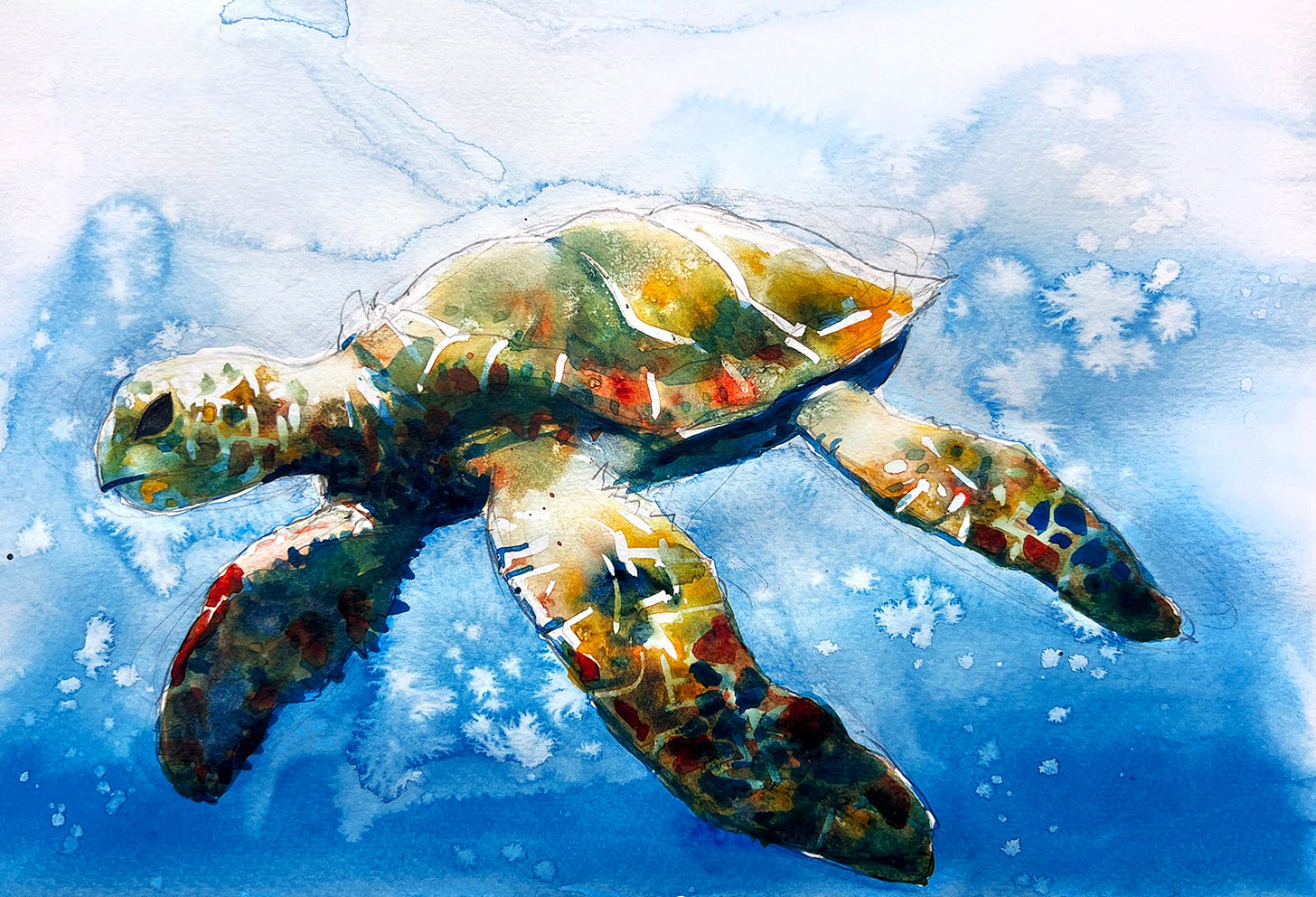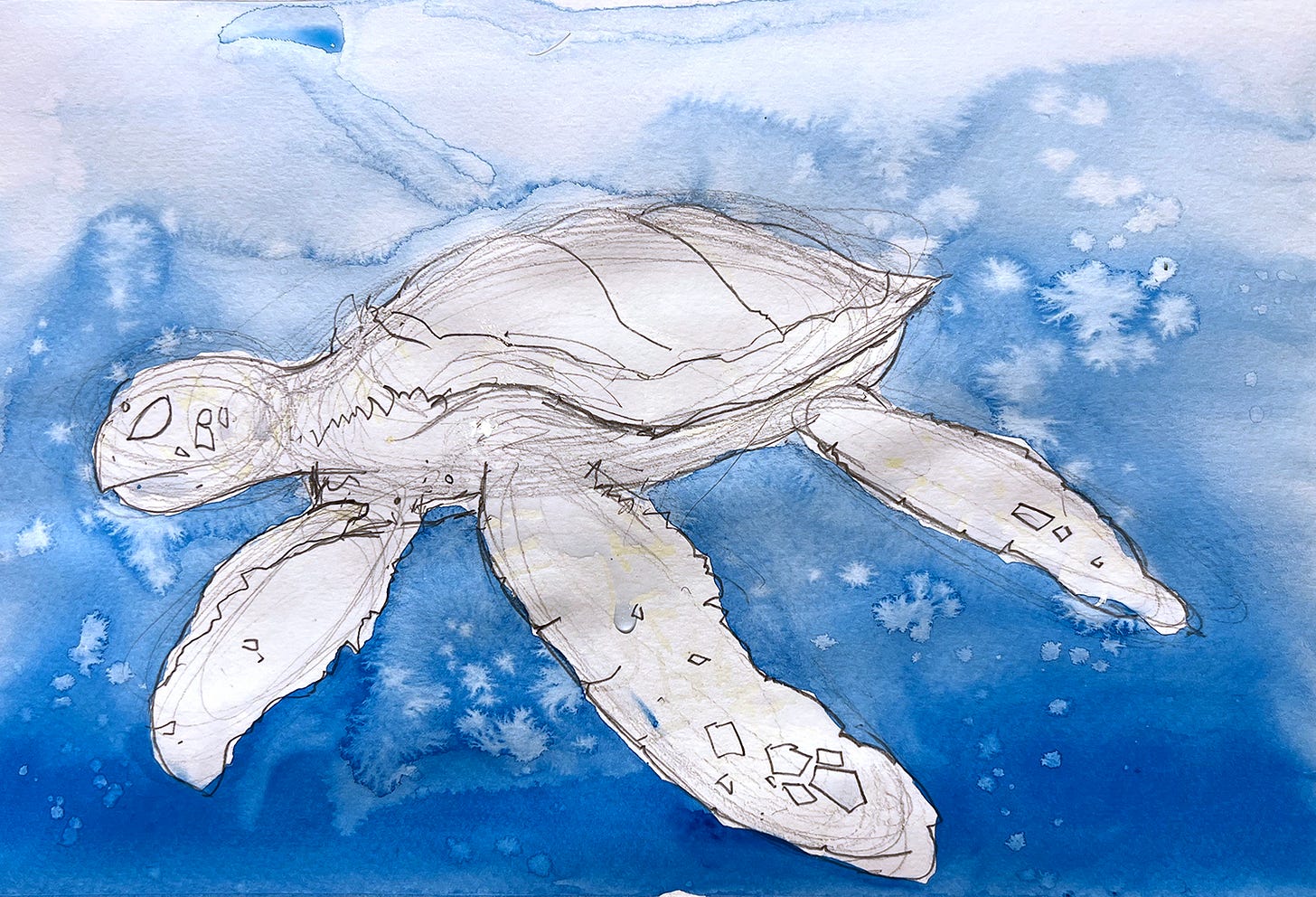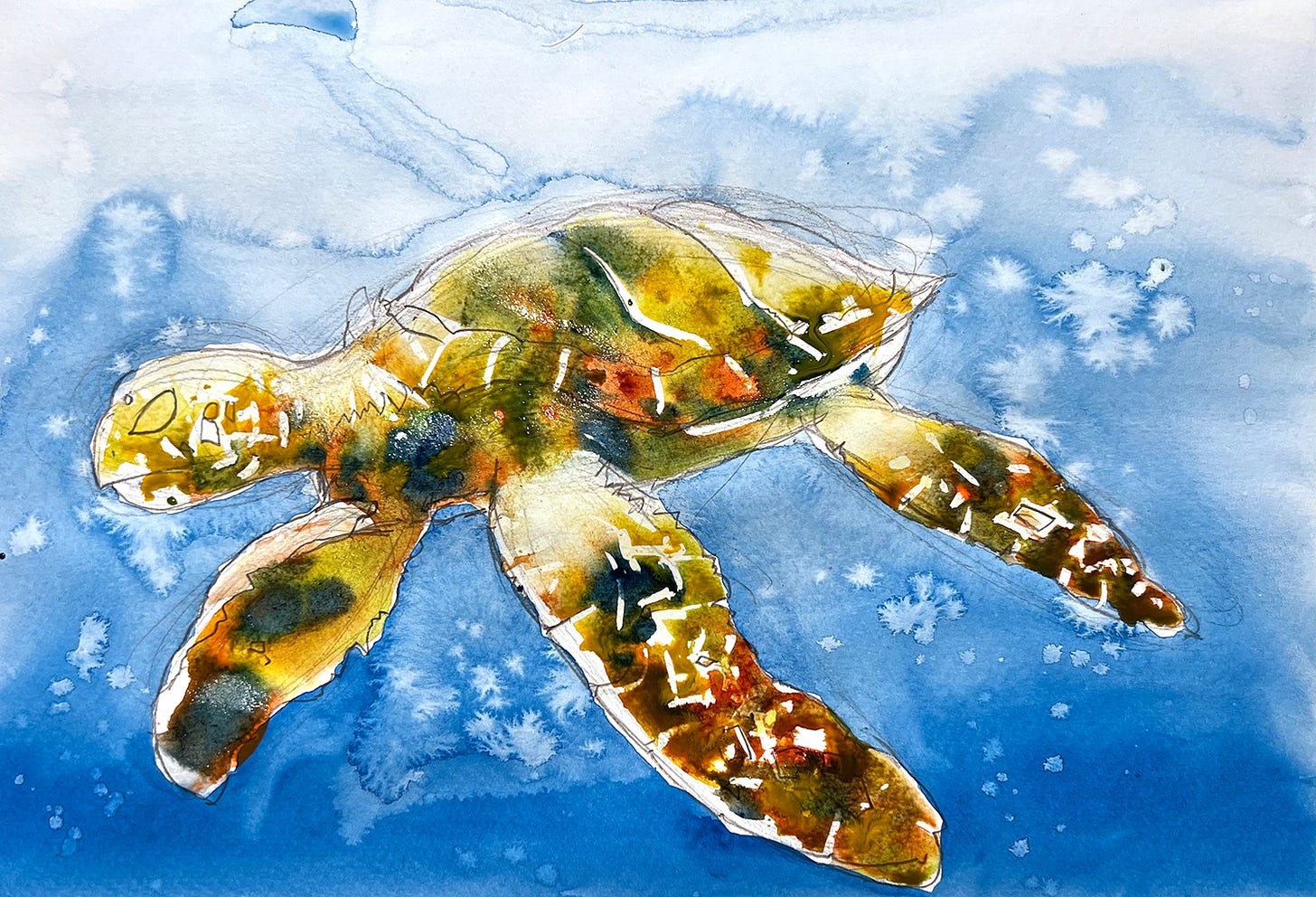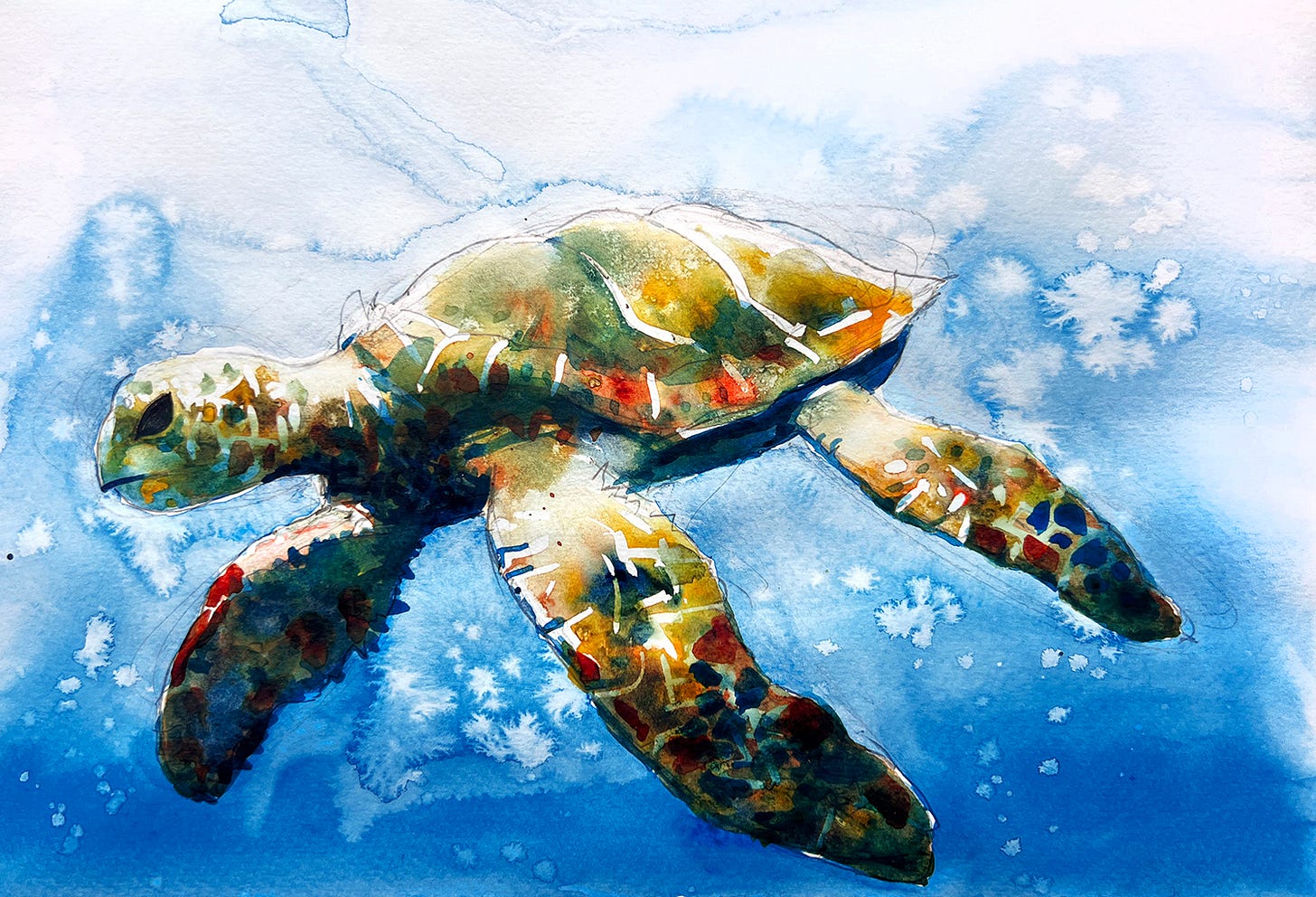You can find the reference pic here. She’s a beauty.
This is the sequence of steps taken to arrive at the painting above;
Initial sketch of the basic shapes. Everything is made of basic shapes. Body, head and flippers are reduced to vague ellipses made with multiple, loose, light pencil strokes. Somewhere in the scribble is the correct outline, but you’ve nevertheless established the correct size, position and orientation of each feature.
With a little careful looking you can find that outline. Spend 90% of the time looking at the reference, 10% at your drawing. Create a clean outline, a clear edge to paint up to. This line will be visible so give it character and quality. Rub out some of the initial sketch lines if you wish.
The blue background is a flat wash becoming more dilute towards the top of the painting. A flat wash is a good way to avoid brush marks. In this case I dropped clear water onto the moist, painted surface to create ‘blooms’ and ‘cauliflowers’. The aim was to give the impression of bubbles, and an organic environment. It’s hard to see here but a little masking fluid was painted on areas to be kept white. This is simply a liquid rubber solution which prevents the paint from getting to the paper. You’ll see it more clearly below.
The outline provides a border for a wash of clean water over the entire body of the turtle. After a minute or so, that water has soaked into the fibres of the paper. This creates the porous surface for painting ‘wet in wet’ creating soft washes of colour which blend and run unpredictably.
As the paper begins to dry the paint behaves differently. With less moisture in the paper fibres, colour no longer soaks into the paper but sits on the surface, ‘staying where it’s put’. This allows for more precise painting and sharper edges.
Completely dry paper allows for glazing, the laying of liquid colour over dry colour. Glazing (imagine layering coloured stained glass) will always darken the underlying colour and will also alter its colour accordingly. Here, a glaze of blue (the same blue as the background) over the turtle creates shadow. The concentration of the glaze varies from dilute (head) to strong (belly). The masking fluid has been rubbed off and also partially glazed over. This is apparent on the flippers where the glaze gets more dilute from the tips toward the body, creating and the illusion of curvature.











